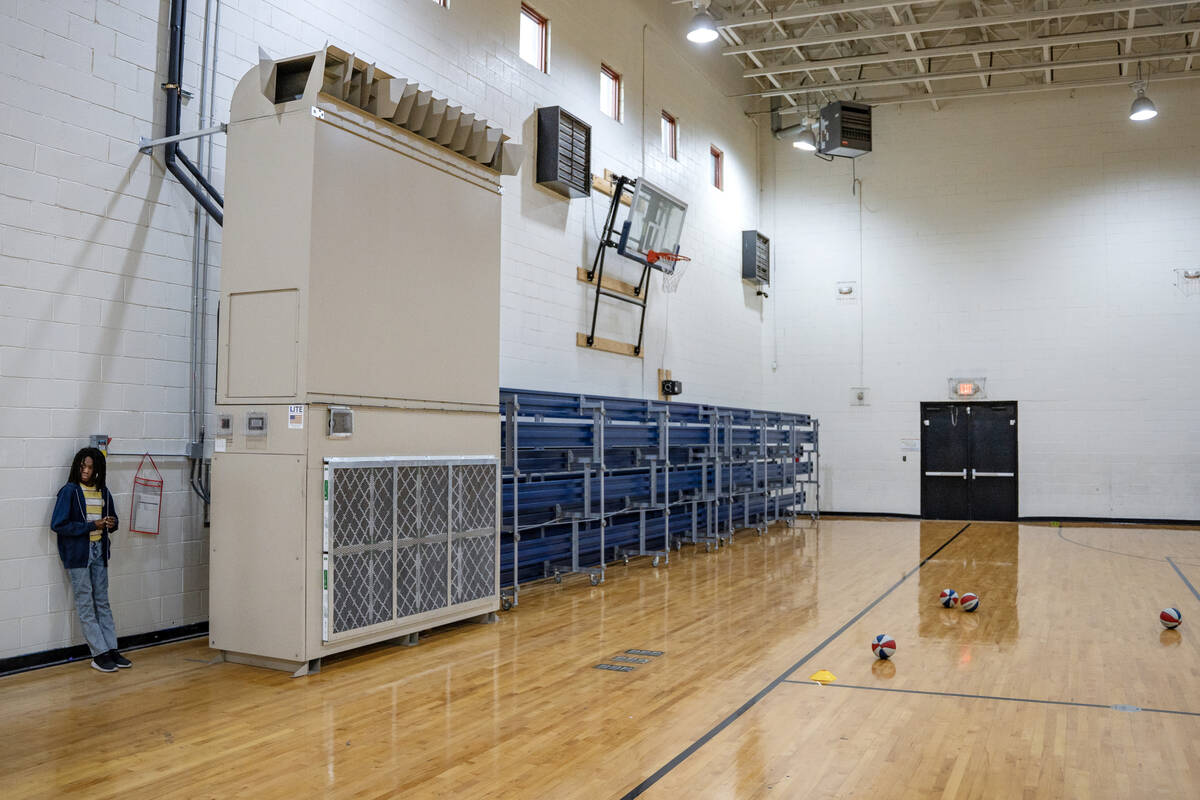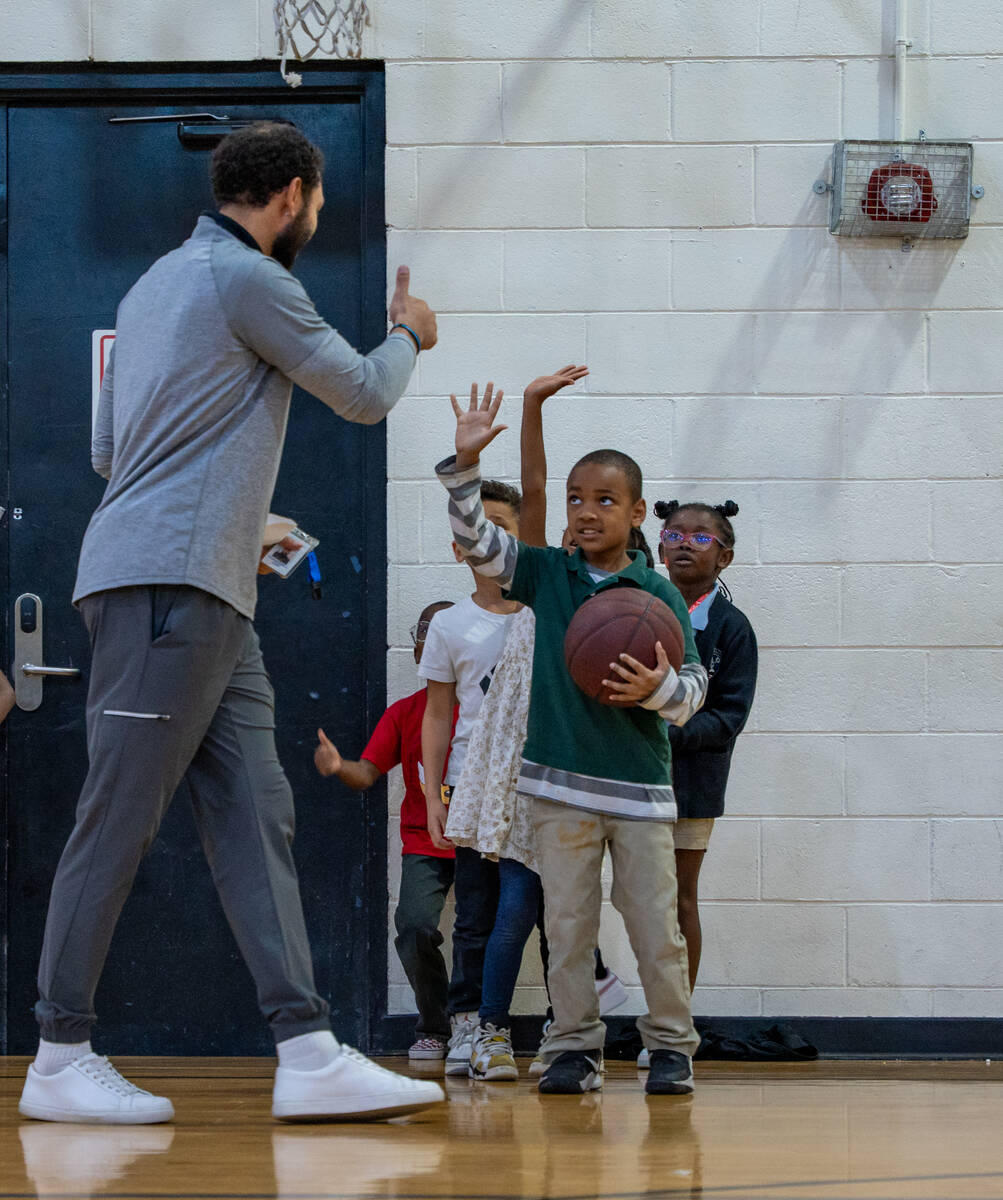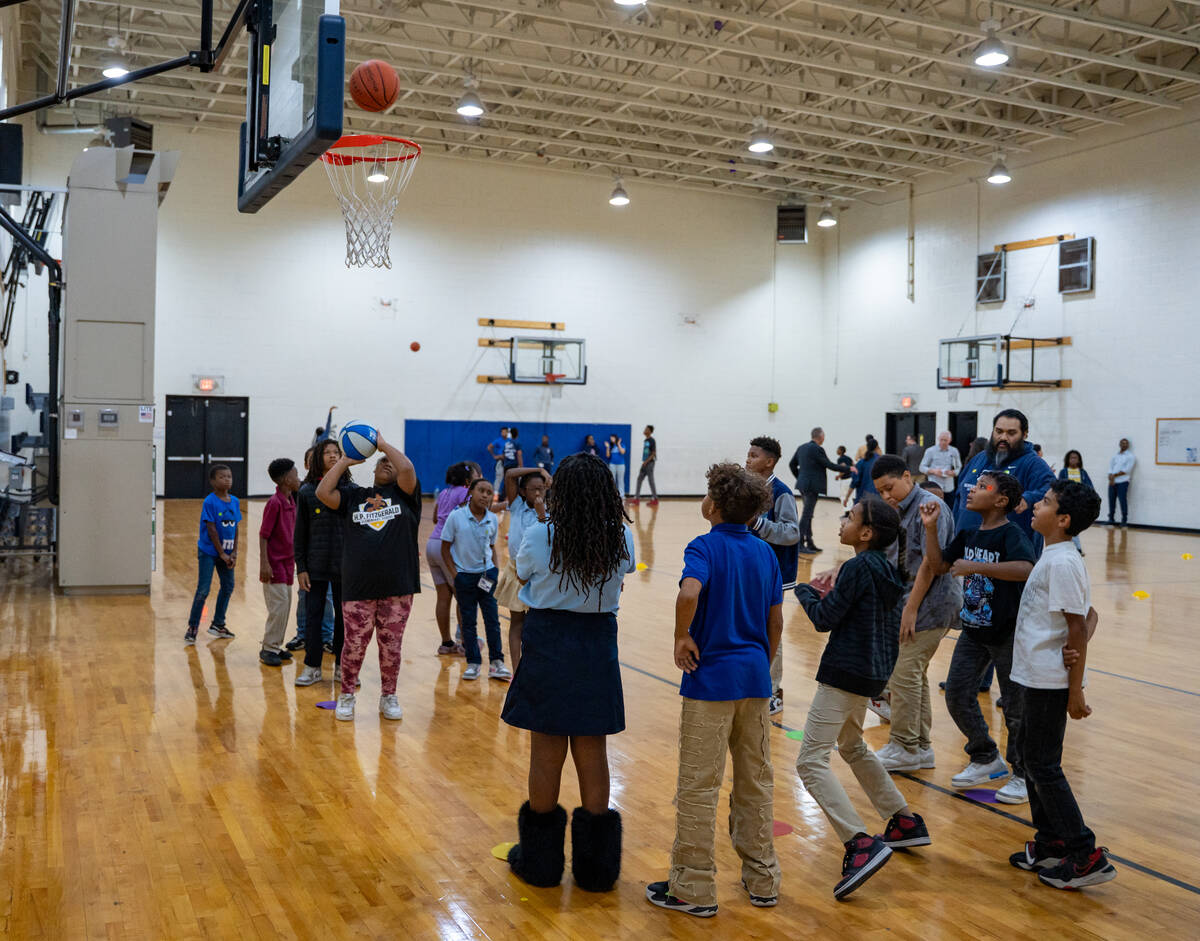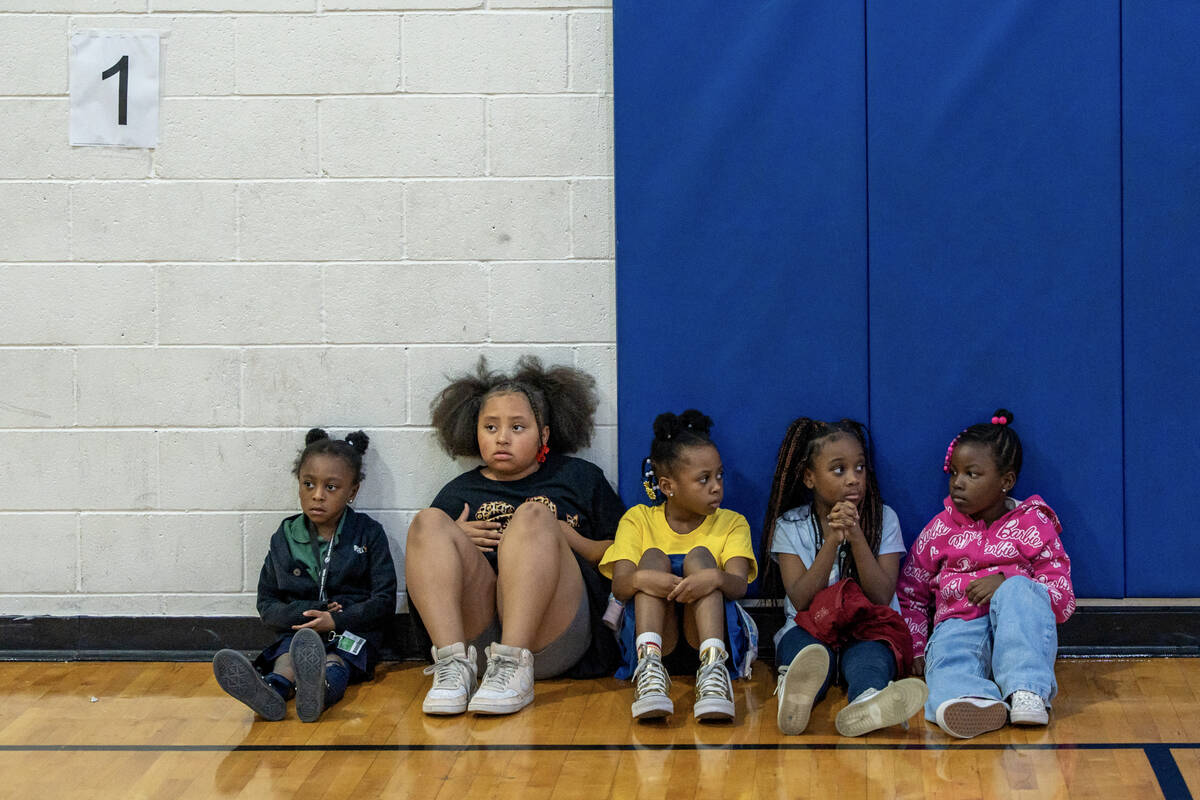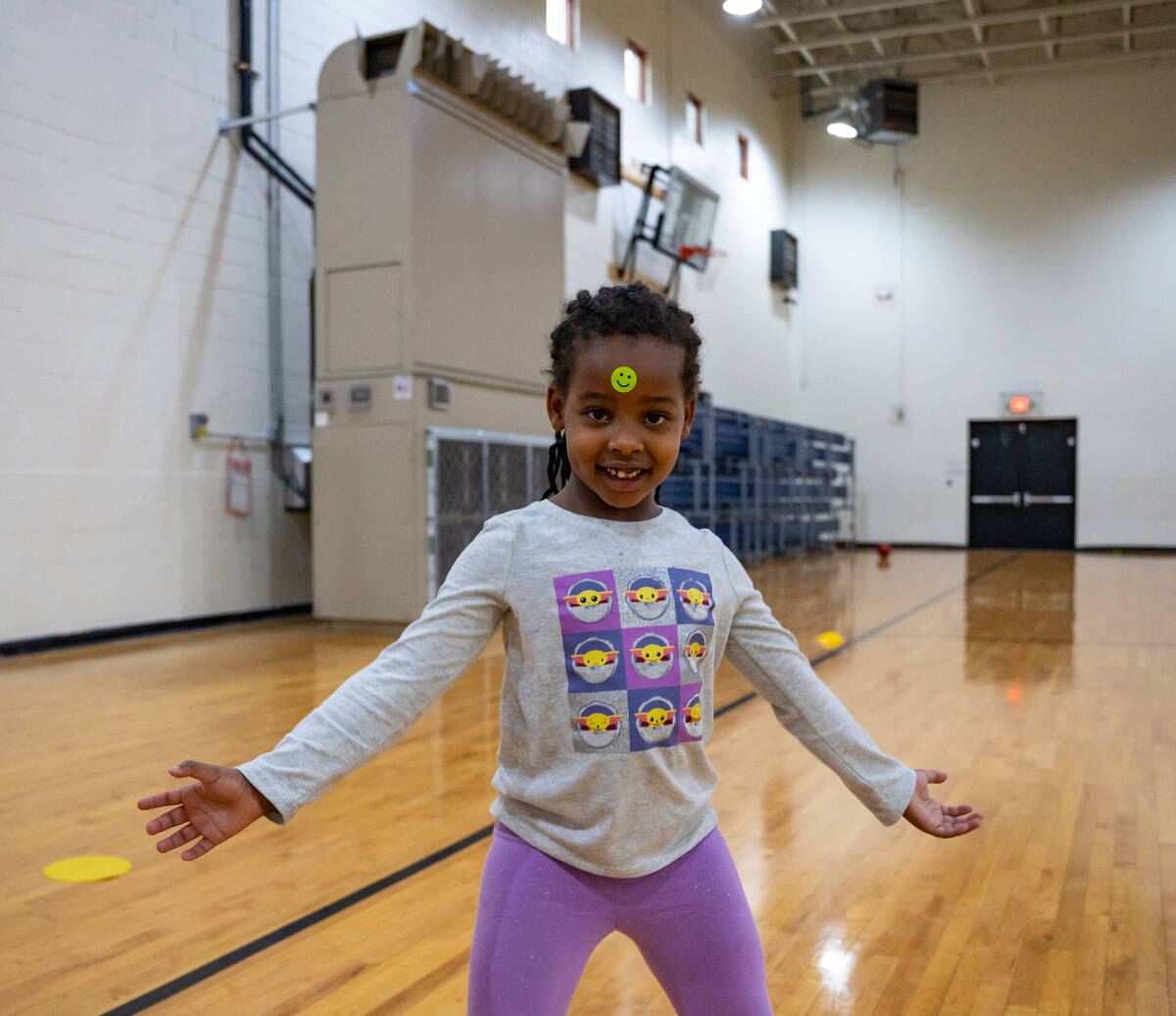‘It’s a win-win’: Historic Westside clubhouse gets water-smart upgrade
A brand-new air conditioning system isn’t just keeping children in the Historic Westside cool — it’s saving an abundance of water each year in a time of megadrought.
The Boys &Girls Club of Southern Nevada, alongside the nonprofit WaterStart and the Southern Nevada Water Authority, showcased the ultra-efficient water cooling system on Tuesday at its Andre Agassi Boys &Girls Club.
According to the water authority, the project will conserve 829,000 gallons of water annually, while also preventing damage to the gym floor caused by excess moisture from water-guzzling coolers. The system was installed in April.
This summer was the first in years that staff could use the gym with no interruptions from a failing air conditioner, said Andy Bischel, CEO and president of the Boys &Girls Clubs of Southern Nevada.
“When we have the kids from 7 a.m. to 6 p.m., that’s their playground,” Bischel said. “We really don’t have outdoor space here, so it’s really important that we have full access to the gym.”
Getting a much-needed maintenance upgrade while saving water — “it’s a win-win,” Bischel said.
Into the 21st century
Named after the famed tennis player, the Agassi facility on the corner of Martin Luther King Boulevard and Washington Avenue in the Historic Westside opened its doors in 1997, becoming the 2,000th chartered Boys &Girls Club in the nation.
The facility, providing child care after school and during school breaks, is adjacent to the Marble Manor public housing annex, operated by the Southern Nevada Housing Authority.
The new, $330,000 cooling system is partially funded through a $150,000 grant from WaterStart and the Bonneville Environmental Foundation in partnership with Google, officials said. The water authority contributed $54,000, as well.
Evaporative cooling has been a target area for the water authority’s conservation measures because those systems are, behind lawn irrigation, the second-greatest sum of water used that cannot be captured, recycled and sent back to Lake Mead, Southern Nevada’s primary water source.
“What we’ve done here is replace a 1900s-era technology with something 21st century,” said Michael Bernardo, the water authority’s enterprise conservation division manager. “Not only does it cool during the summertime, but it could heat in the wintertime.”
The water authority adopted an evaporative cooling ban for new developments that took full effect in 2024, giving it the ability to decline applications for new buildings that would feature water-inefficient coolers.
Lake Mead and the greater Colorado River system have been facing steep declines in available water because of overuse, climate change and other issues. Nevada and the other six states that rely on the river’s water are wrapped up in the middle of a tense negotiation process to update guidelines that will expire at the end of 2026.
A call for more collaboration
WaterStart, the main benefactor of the new system based in Las Vegas, continues to look for ways to support Las Vegas-area businesses and utilities across the world to conserve, CEO Rebecca Shanahan said.
The Nevada Governor’s Office of Economic Development invested $1.8 million in the innovation incubator in May to help it achieve that goal.
Another project the nonprofit had a hand in was the Las Vegas Grand Prix’s atmospheric water generator that helped the event become water-neutral.
“That pipeline is being built — no pun intended,” Shanahan said. “We understand the challenges of delivering and treating water in a drought-stricken region. I’m hopeful this project brings awareness to our mission.”
The water authority’s water-efficient technologies program is always seeking to help groups find funding to transition their buildings away from evaporative cooling, Bernardo said.
Anyone interested in learning more can fill out a form at snwa.com/apps/business-conservation/index.cfml and expect to hear from a staff member, he said.
“We’re hoping that this translates to other gymnasiums, large areas, warehouses,” Bernardo said. “It starts with an example project like this that people can see and get data from. And then it goes from there.”
Contact Alan Halaly at ahalaly@reviewjournal.com. Follow @AlanHalaly on X.





